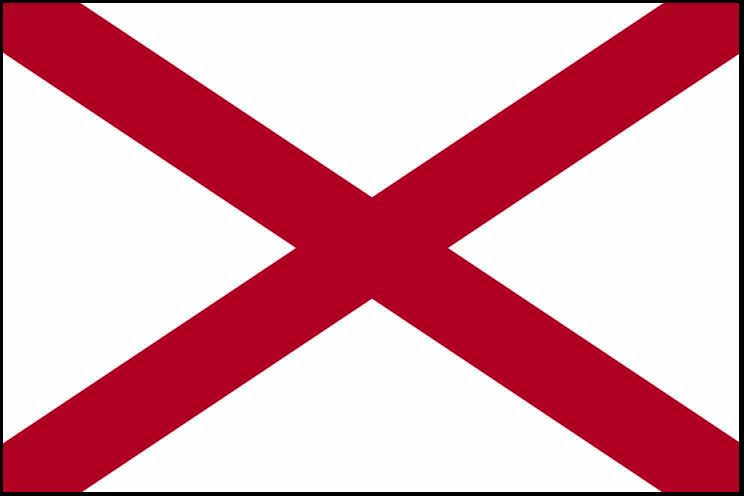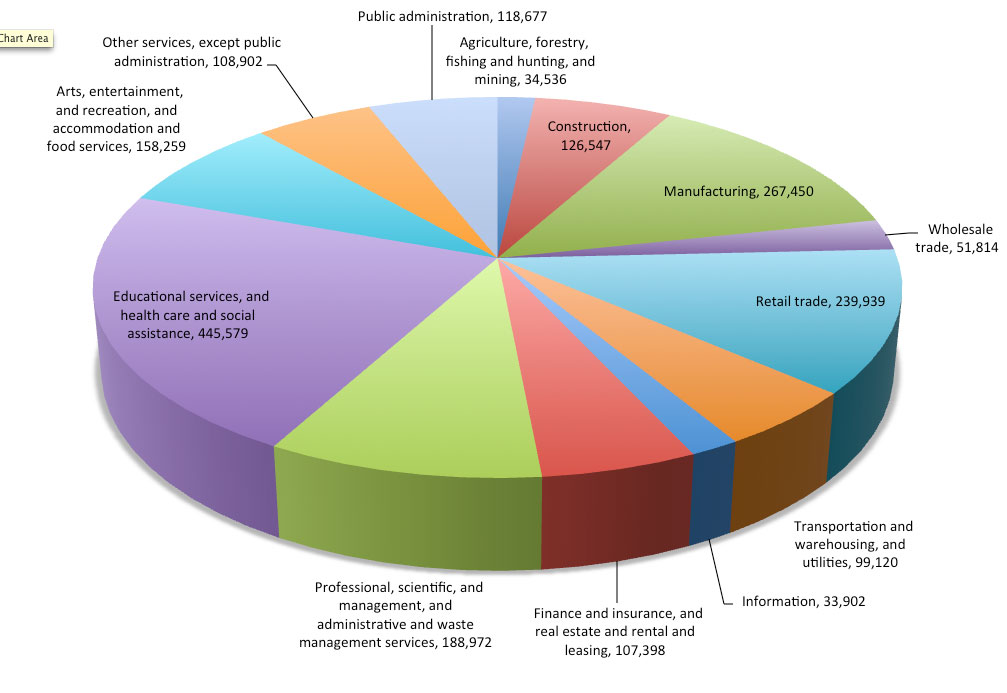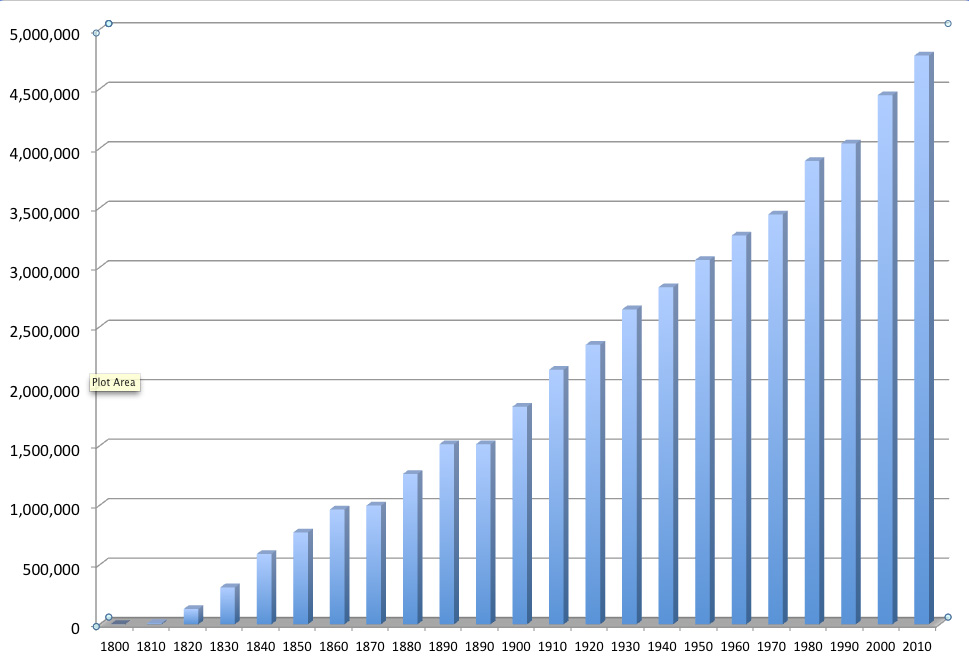ALABAMA


Basic Information
Postal Abbreviation: AL
Natives: Alabamian
Population 2020: 5,024,279
Legal Driving Age: 16
Age of Majority: 19
Median Age: 39.1
State Song: “Alabama”
Lyrics: Julia S. Tutwiler
Music: Edna Glockel Gussen
Median Household Income:$46.472
Capital: Montgomery
Entered Union..... Dec. 14, 1819 (22th)
Present Constitution Adopted: 1901
Nickname: Yellowhammer State
Heart of Dixie
Motto:
“Audemus jura nostra defendere”
(We dare defend our rights)
Origin of Name:
Possibly from Choctaw Indians (means "thicket-clearers" or "vegetation-gatherers)
Railroad Stations
BB 8 USS Alabama
BB60s USS Alabama
Alabama Economy
AGRICULTURE:
cattle, chickens, cotton, dairy
eggs, fruit, peanuts, soybeans,
vegetables, wood.
MINING: bauxite, clay, cola,
natural gas, petroleum, sand, shale
MANUFACTURING: chemicals,
clothing, electronics, food
processing, furniture, lumber and
wood products, metal, paper
products, textiles.

Alabama Geography
Total Area: 52,423 sq. miles
Land area: 50,750 sq. miles
Water Area: 1,673 sq. miles
Geographic Center: Chilton County, 12 mi.
SW of Clanton
Highest Point: Cheaha Mountain (2,405 ft.)
Lowest Point: Gulf of Mexico (sea level)
Highest Recorded Temp.c: 112˚ F (9/5/1925)
Lowest Recorded Temp.: -27˚ F (1/30/1966)
Alabama has a mild climate and rich soil. Most of the northern part of the state is covered with forested hills. Moving south, the hills give way to rolling grasslands and farmlands. The southern part of the state is marked by the Mobile Bay bayous. The southern border of the state is Mobile Bay.
Cities
Birmingham, 209,880
Montgomery, 198,218
Mobile, 189,572;
Huntsville, 197,318;
Tuscaloosa,101,113;
Hoover, 85,108;
Dothan,68,247;
Decatur, 55,683;
Auburn, 53,380;
Madison, 42,938
Alabama History
1540 Hernando de Soto arrived in Alabama from Florida.
--Spaniards defeat local Indains at the Battle of Mauvilla.
1559 Tristan de Luna established a settlement on Mobile Bay.
1702 The French found Fort Louis de la Mobile the first French settlement.
1711 Fort Louis was moved to the present day Mobile.
1719 The French brought the first African slaves to Alabama.
1763 Treaty of Paris Ends Under terms France ceded all the land east of the
Mississippi to England thus Alabama became an English territory.
1811 Mobile Centinel is published
1813 Americans defeat the Spanish garrison at Mobile
1814 General Andrew Jackson defeated the Creek Indians at the Battle of
Horseshoe Bend.
1817 Congress passed a law establishing Alabama territory
1818 The first territorial legislature met.
1819 Alabama was admitted to the Union as the 22d state.
1830 The Choctaw Indians ceded their remaining land and they begin their
migration to Oklahoma.
1836 The Cherokees were forced to migrate to Oklahoma
1861 Alabama voted on secession. The Provisional government of the
Confederate States met in Montgomery in February 1861 and it adopted a
constitution.
1864 Admiral David Farragut defeated the Confederates at the Battle of Mobile
Bay.
1865 the state adopted a new constitution.
1876 Federal troops were withdrawn from Alabama.
1881 Booker T Washington opened the Tuskegee Institute.
1925 The first radio station WBRC was established in Birmingham. In
1931 Eight black youths were convicted and sentenced to death at the Scottsboro
Trail.
1951 Rosa Parks refused to give up her seat on a bus to white passengers and
that precipitated the black boycott of the buses.
1956 the Supreme Court ruled the states segregation laws unconstitutional. In
1963 George Wallace became governor and announced that he would defy
federal integration laws. In June
1964 Two Blacks students enrolled at the University of Alabama in opposition of
Governor Wallace.
1965 Martin Luther King and 25,000 followers march from Montgomery to
Selma.
Famous People
Hank Aaron
Hugo Black
Helen Keller
Coretta Scott King
Condoleeza Rice
George Wallace

Alabama National Sites
1) Horseshoe Bend National Military Park
Andrew Jackson Defeated the Creek Indians here in the Battle of Horseshoe Creek. This effectively ended the Creek Wars. Today there is a three mile loop road that runs through the battlefield. There is a museum with period weapons, and information on the battle.
2) Russell Cave- National Monument
Approximately 8,000 years ago Indians settled in a cave in Northern Alabama. The relics of their life were found in Russel cave. Today visitors can visit main chamber that measures 107 feet wide, 258 deep, with a 29 foot ceiling.
3) Tuskegee Institute National Historic Site
In 1881 Booker T. Washington the African American Educator founded the Tuskegee Institute the first institution of higher learning dedicated to vocational teaching of African Americans. Today the school is a fully accredited college with 5,000 students and staff. On the campus is the George Washington Carver Museum, which celebrates the life of Carver, the African American scientist who worked at the Institute
 >
>